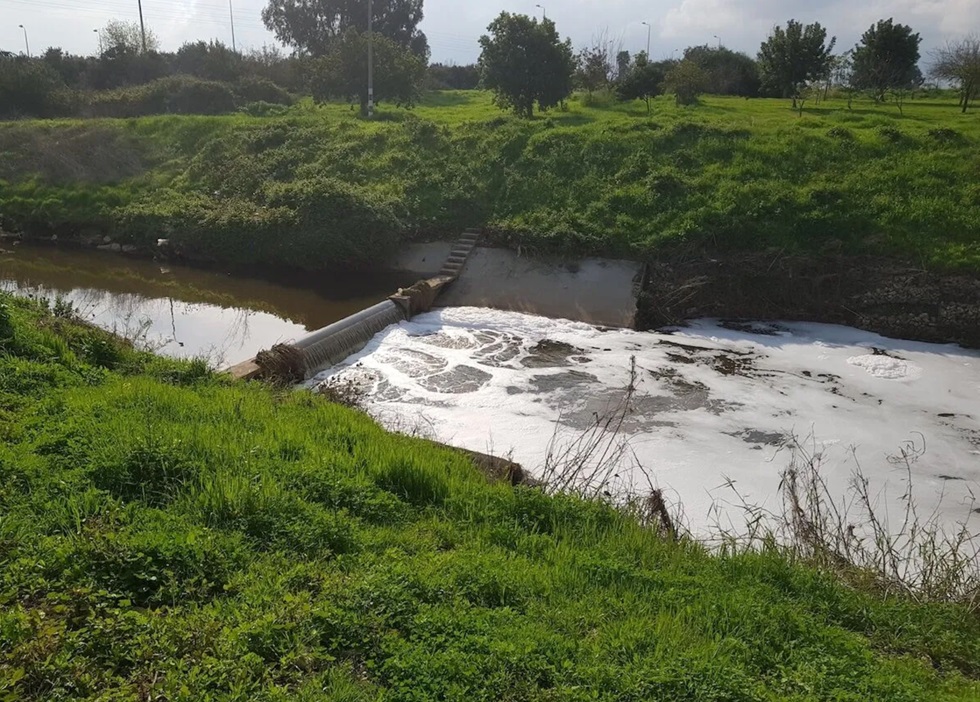
A new study has discovered that small coastal estuaries contain concentrations of per- and polyfluoroalkyl substances (PFAS) “forever chemicals” high enough to indicate a worldwide issue.
For the study, the researchers looked at the distribution, occurrence, and risks of PFAS during the dry season in three micro-estuaries, a press release from Hebrew University of Jerusalem said.
“Microestuaries have a crucial role in supporting biodiversity and human life quality in heavily populated areas. They are also the last barrier controlling fluxes of pollutants from the land to sea,” the authors of the study wrote. “The need for green zones and ecosystem services is constantly on the rise, with few to null open areas available to provide these necessities in highly urbanized areas.”
The study, “Exploring Per- and Polyfluoroalkyl Substances (PFAS) in Microestuaries: Occurrence, Distribution, and Risks,” was published in the journal Environmental Science & Technology Letters.
The research team analyzed 120 samples from estuaries and found surprisingly high concentrations of PFAS that exceeded the recommended thresholds for aquatic ecosystems and recreation, the press release said.
“The increasing proportion of wastewater to fresh water in streams, a trend projected to extrapolate to temperate regions due to climate change, consequently leads to chronic exposure of estuaries to elevated PFAS concentrations. Unless removed at wastewater treatment plants, this exposure disqualifies the estuaries as a vibrant aquatic system for human recreational activity, such as kayaking and fishing,” the study said.
PFAS are commonly found in firefighting foam used in industrial zones, refineries, and airports.
“There are thousands of PFAS synthesized and used globally. A recent work identified and classified 4730 different PFAS, and out of those, 256 are commercially available products. The large number of PFAS makes it difficult to monitor their fate and reactivity in the environmental compartments,” the study’s authors wrote.
Wastewater effluents — especially those coming from refinery facilities within industrial zones — have been found to be a point source of PFAS pollution.
“This anthropogenic stress may intensify due to climatic change, especially in semiarid regions already struggling with water scarcity. Aquatic ecosystems in these regions often suffer from low freshwater input and a constant discharge increase of wastewater of various qualities. This scenario, predicted to expand to more temperate zones, consequently limits the dilution of pollutants transported in water. In the case of persistent highly toxic pollutants, e.g., per- and polyfluoroalkyl substances (PFAS), the potential exposure of wildlife and humans cannot be ignored,” the authors wrote in the study.
The researchers emphasized the need to address PFAS impacts through focused interventions, the press release said. This is especially necessary in regions where industrial activities meet micro-estuaries.
Though the three micro-estuaries in the study had similar characteristics — like watershed size, precipitation, morphology, and water volume — the study underscored how connectivity to the sea, alterations in water input, and local human activities can greatly change the concentrations, distribution, and occurrence of PFAS.
The study stressed the need for focused environmental management tactics to protect estuaries from PFAS contaminants. It also brought attention to the necessity for regulatory measures and overarching environmental monitoring to safeguard these vital ecosystems.
“Although systematic works on PFAS occurrence in rivers found them to be dominant pollutants in estuaries, the global perspective is still missing unlike research done for other key pollutants,” the authors wrote. “This study’s findings raise concerns of an alarming health risk to the constantly growing population which lives in proximity to these ubiquitous aquatic systems and the adjacent coasts.”
This article was reposted from EcoWatch.
We hope you appreciated this article. At People’s World, we believe news and information should be free and accessible to all, but we need your help. Our journalism is free of corporate influence and paywalls because we are totally reader-supported. Only you, our readers and supporters, make this possible. If you enjoy reading People’s World and the stories we bring you, please support our work by donating or becoming a monthly sustainer today. Thank you!












Comments